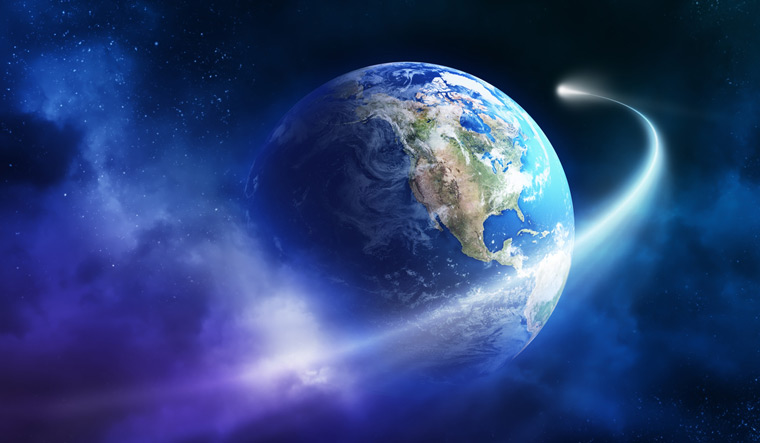Caltech researchers have unveiled a stunning revelation about the origins of our planet and its celestial companion, the Moon. The study, published in the journal Nature, suggests that two massive continent-sized blobs of peculiar material deep within Earth, known as large low-velocity provinces (LLVPs), are remnants of an ancient planet that violently crashed into our young Earth billions of years ago, triggering the formation of the Moon.
Geophysicists first stumbled upon these enigmatic LLVPs in the 1980s while studying seismic waves traveling through the Earth. These waves move at different speeds through various materials, and the researchers noticed large-scale three-dimensional anomalies deep within Earth's structure. Located near the Earth's core, these structures exhibited an unusually high level of iron, making them denser than their surroundings and causing seismic waves passing through them to slow down.
Led by Qian Yuan, a postdoctoral scholar research associate at Caltech (California Institute of Technology), the team embarked on a quest to uncover the origin of these LLVPs. The breakthrough came during a seminar on planet formation when Professor Mikhail Zolotov from Arizona State University hypothesized the existence of an impactor that collided with Earth, leading to the formation of the Moon. Yuan, struck by a moment of inspiration, connected the dots between the Moon's iron-rich composition and the possibility that the impactor's remnants could have transformed into the LLVPs.
Through extensive simulations and collaborations with multidisciplinary experts, the researchers demonstrated that the collision between Earth and the impactor, dubbed Theia, could have given rise to both the LLVPs and the Moon. According to their models, some of Theia's mantle merged with Earth's own, eventually clumping and crystallizing into the distinct blobs observed today at the core-mantle boundary. Meanwhile, debris from the collision coalesced to form our Moon.
The study also offers an explanation for the absence of any trace of Theia in the asteroid belt or meteorites. It suggests that most of Theia's material was absorbed into Earth, leaving behind only remnants that shaped the LLVPs and the Moon.
So why did Theia's material form these distinct blobs instead of blending seamlessly with the rest of the planet? The team's simulations revealed that a significant portion of the energy from the impact remained in the upper half of Earth's mantle. This resulted in the lower mantle being relatively cooler than previously estimated by lower-resolution models. The lower mantle's temperature played a crucial role, as the iron-rich material from Theia stayed relatively intact and sank to the base of the mantle, resembling the masses of colored wax in a still lava lamp. If the lower mantle had been hotter, the material would have mixed more thoroughly with the rest of the planet.
This study not only unravels the mystery behind Earth's enigmatic LLVPs but also provides a captivating glimpse into the violent history that shaped our planet and brought the Moon into existence. With each new discovery, our understanding of the cosmos grows, revealing the intricate connections that bind the celestial bodies in our vast universe.
The implications of this discovery extend beyond the Moon's origins. The researchers are now exploring how Theia's presence deep within Earth's interior may have influenced the planet's early evolution, including the onset of plate tectonics, the formation of the first continents, and the origin of the oldest surviving terrestrial minerals.
"As remnants of Theia, the LLVPs are likely very ancient," explains Paul Asimow, the McMillan Professor of Geology and Geochemistry at Caltech. "Investigating their consequences for Earth's earliest evolution will shed light on pivotal events such as the emergence of subduction and the formation of the oldest terrestrial minerals."


